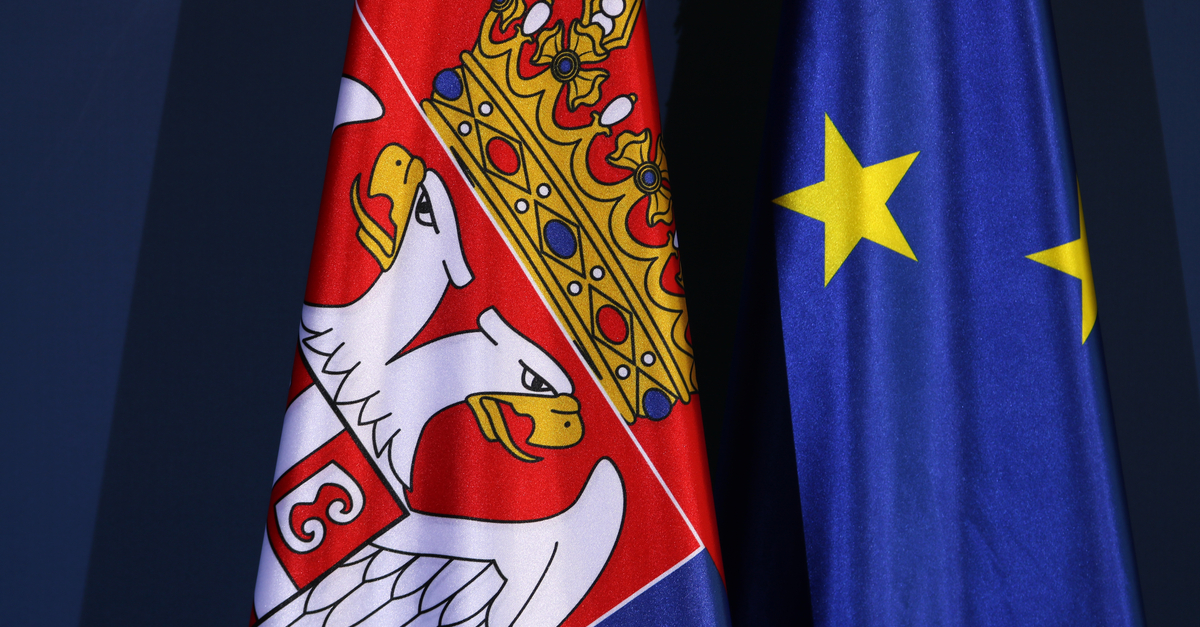During the Thessaloniki European Council in 2003, Serbia – along with 5 other Western Balkans countries – was identified as a potential candidate for EU membership.
In 2007, the government took credible measures to envigor co-operation with the International War Crimes Tribunal in The Hague.
In December 2009, the visa liberalization regime allowed Serbian citizens to travel within the Schengen area without a visa, showing that the process can deliver concrete results directly benefiting citizens. Just a couple of days later, President Tadic delivered to the Swedish presidency Serbia’s application for membership to the EU.
In February 2010, the Interim Agreement on Trade and trade related matters entered into force and in June the unfreezing of the Stabilisation and Association Agreement (SAA) was decided, putting Serbia solidly back on the path towards EU Membership. The SAA between the EU and Serbia entered into force in September 2013.
In March 2012 Serbia was granted EU candidate status.
In line with the decision of the European Council in June 2013 to open accession negotiations with Serbia, the Council adopted in December 2013 the negotiating framework and agreed to hold the 1st Intergovernmental Conference with Serbia in January 2014.
On 21 January 2014, the 1st Intergovernmental Conference took place, signaling the formal start of Serbia’s accession negotiations.
To date Serbia has opened 18 of accession negotiation chapters and provisionally closed 2 of them.
Political Relations
At the Thessaloniki European Council summit, the Stabilisation and Association Process (SAP) is confirmed as EU policy for the Western Balkan. The process was officially open by the European Council in October of 2004. Stabilisation and Association Agreement (SAA) with Serbia was signed in 2008. In 2009, the visa requirement was lifted for citizens of Serbia traveling to Schengen countries, while during the same year, Serbia officially applied for EU membership.
In 2010, EU members decided to start the SAA ratification process. In 2012, European Council confirmed Serbia as a candidate country, and a year later endorsed the Commission’s recommendation to open negotiations with Serbia. In 2013, the EU-Serbia Stabilization and Association Agreement entered into force.
First EU-Serbia Intergovernmental Conference was held in January of 2014, while in 2015, the first two of 35 negotiating chapters were opened. As of 2020, 18 negotiating chapters were opened, and Serbian authorities have announced that the process will continue using the new methodology agreed at the beginning of that year.
In 2018, The European Commission adopted a strategy for ‘A credible enlargement perspective for and enhanced EU engagement with the Western Balkans’. Following this strategy, two summits were held with this topic, during the Presidencies of Bulgaria in 2018 and Croatia in 2020.
Serbia also participates in the INTERREG Cross Border Cooperation programmes. In 2014-2020 period, Serbia takes part in eight cross-border and transnational cooperation programmes: Hungary-Serbia; Romania-Serbia; Bulgaria-Serbia; Croatia-Serbia; Serbia-Bosnia and Herzegovina; Serbia-Montenegro; Adriatic-Ionian transnational programme and Danube transnational programme.
Financial Relations
With more than EUR3 billion in non-refundable aid over the past two decades, the European Union is the biggest donor in Serbia and the country’s number one partner in supporting development and ongoing reforms. The long-standing financial assistance has been spent on programmes and projects which fostered development and concrete reforms, thus contributing to the well-being of citizens in many areas.
The history of the partnership dates back to March 2001 through CARDS or Community Assistance for Reconstruction, Development and Stabilisation Programme. In 2006, the CARDS Programme was replaced by the Instrument for Pre-accession (IPA) which ran until 2013. The IPA was followed by the IPA II which will bring Serbia EUR1.5 billion in grants in the period from 2014-2020 (some EUR200 million per year). The IPA II Programme is focused on the key areas which should facilitate Serbia’s preparation for its membership in the European Union.
Every year, Serbia and the EU sign the IPA financial agreement for projects whose implementation is planned in the coming period. The latest, as the first part of IPA 2020, is worth 70 million euros.
The EU approved assistance worth 93 million euros to Serbia in the fight against the COVID 19 pandemic. Also, the EU role was very important in mitigating the consequences of the 2014 floods. Serbia is the largest recipient of EU donations in the Western Balkans and one of the largest in the world.

